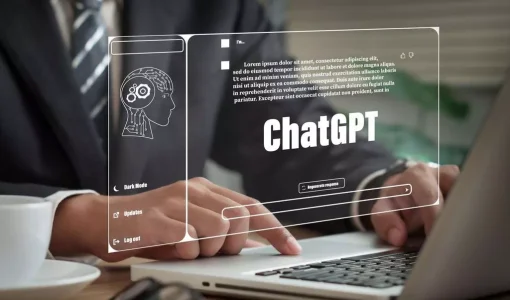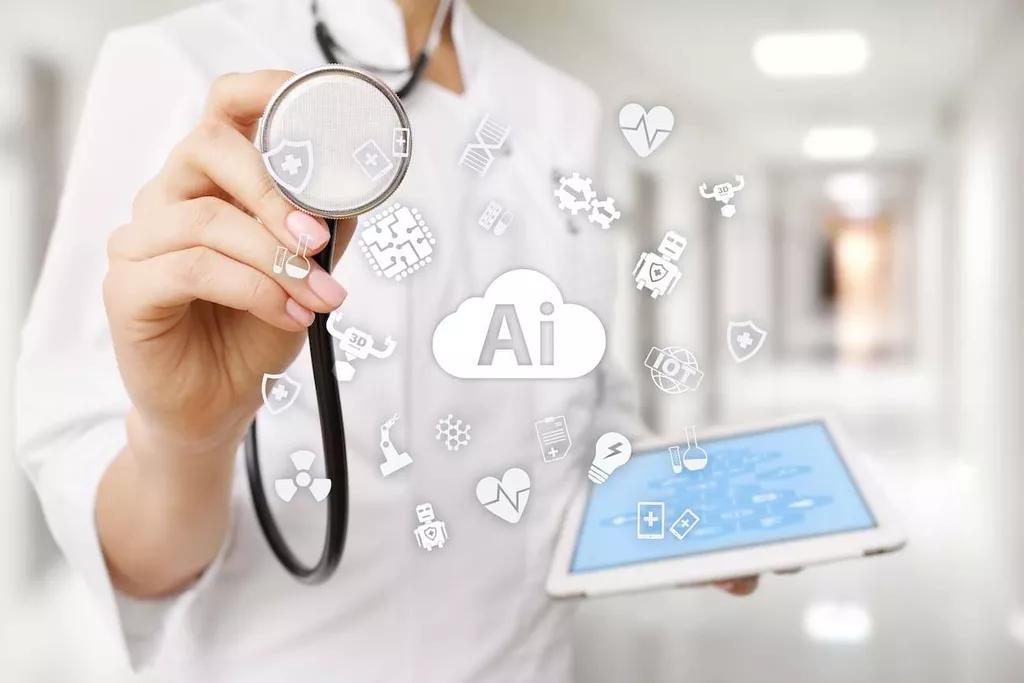Chatbot for Healthcare IBM Watson Assistant

Periodic checkups are required by the patients with a doctor to have an instruction of better recovery. Sometimes, patients need help understanding the instructions mentioned in their post-care plan. The communication gap needs to be bridged during recovery; thus, AI trends in healthcare are required. It helps in issuing reminders for the mandatory actions that the patients need to take after they have submitted their details about the post-care actions. The concerned doctor also receives an alert about the patient’s times of emergencies. Now that we have discussed the significance of implementing conversational AI tools within healthcare, it’s time to dig deeper.
- Health data analytics company Innovaccer unveiled six new solutions on Monday during the HIMSS conference in Chicago.
- Give people the freedom and flexibility to engage with text, voice, video, sensors, and everything else they need to move between modalities fluidly.
- It helps in issuing reminders for the mandatory actions that the patients need to take after they have submitted their details about the post-care actions.
- Note that in hospitals such critical data might be stored on premise, on the cloud or in a hybrid model.
- Medical chatbots make it simple for your patients to find relevant information about insurance services.
- Due to societal, cultural and economic differences, the attitudes towards healthcare may differ between countries and regions.
The goal of conversational AI is to make it possible for humans and computers to communicate. Diagnoses can be made using conversational robots and artificial intelligence used in the healthcare industry. To accomplish this, the patient chats with the chatbot and reports their symptoms, which the chatbot then examines using cutting-edge artificial intelligence. Issuing a medical diagnosis and, if deemed necessary, setting up a consultation to conduct a more thorough evaluation or speak with an expert. Authenticx provides insight on agent quality, customer sentiment, unsupervised topic identification, HIPAA, adverse events, and other healthcare challenges with the development of specific machine learning models. Amid the deepening crisis we saw during the pandemic years, especially in the healthcare sector, conversational AI has had to emerge as a new and necessary avenue for powering a positive change.
Who’s saying what? Cybersecurity mentions in company filings of healthcare industry increased by 141% in Q1 2023
While the mechanisms by which they operate may be similar, the same conversational AI solution may not be applicable across diverse industries and uses cases. In the healthcare industry, there are specific challenges to address metadialog.com which will dictate how organisations go about implementing a virtual assistant. Virtual assistant work by analysing and processing user input and matching it with the most appropriate response from a database of answers.
Since the 1980s, we’ve seen usage steadily grow, including integration into everyday technologies like Microsoft’s infamous Clippy. Eric’s addition to Authenticx is a strategic hire to drive innovation and accelerate the company’s position as the go-to artificial and conversational intelligence solution for healthcare organizations. Authenticx uses its machine learning models, including Conversation Summary and the Eddy Effect™, to analyze these conversations. These models were purposely built to address the industry’s most pressing challenges.
Content tagging using Azure and NLP
We train our virtual assistant algorithms to guarantee offering a smart, personalized, and human-like experience as you deal with a doctor. Conversational AI refers to a type of artificial intelligence that is designed to simulate human conversation. The goal of conversational AI is to create systems that can understand human intent and engage in natural, human-like conversations.
AI Chatbot for doctors, clinics and hospitals to automate appointment scheduling, pre-screening, symptom checking, and providing relevant information. Suppliers are offering Low Code and No Code platforms with Do-It-Yourself (DIY) features, which help address such development-related challenges. These platforms have all the possible features for various use cases in one place, and end users gain the ability to customize their healthcare chatbots with just a few clicks. While the first issues can mostly be solved with automated proofreading tools like Studicus, WowGrade, SupremeDissertations or Grammarly, the imitation of human interaction is an issue for natural language processing (NLP). Sensely chatbot also helps patients evaluate medical procedures, and determine, which ones they really need. Thus, patients can learn more about the constituents of their healthcare insurance and save money.
Providing on-demand support is critical to improving access to mental health services
The health system staffs over 14,000 people, including more than 2,800 physicians, physician assistants, and nurse practitioners. The first priority was organizing the digitization of tasks to support its 90 neurologists and other physician specialists working at 45 site locations. FCN considered each practice a care center or department servicing a collective of 230,000 patients and 42 hospitals yearly across five Florida counties. The biggest obstacle to achieving a successful conversational AI-powered digital transformation isn’t about technology ─ it’s helping management and users overcome their fear of change. A 2020 study by Boston Consulting Group found that a staggering 70% of digital transformation projects fall short of their goals — even when leadership is aligned.
Who uses conversational AI?
Conversational AI can definitely be used in a wide variety of industries, from utilities, to airlines, to construction, and so on. As long as your business needs to automate customer service, sales, or even marketing tasks, conversational AI and chatbots can be designed to answer those specific questions.
In fact, CAI presents a key use case, with virtual assistants bringing value through automated conversations with patients, healthcare providers, health insurance payers, and life sciences companies. This has enabled a range of exciting applications that provide greater convenience to patients, while enabling healthcare providers to streamline their work. One critical insight the healthcare industry has learned through the COVID-19 pandemic is that medical resources are finite.
Maudsley Digital Lab
To further understand how artificial intelligence is disrupting the healthcare industry, access GlobalData’s latest thematic research report on Artificial Intelligence (AI) in Healthcare. GlobalData’s analysis also uncovers the companies at the forefront of each innovation area and assesses the potential reach and impact of their patenting activity across different applications and geographies. According to GlobalData, there are 20+ companies, spanning technology vendors, established healthcare companies, and up-and-coming start-ups engaged in the development and application of conversational AI for healthcare. Conversational AI offers instant, personalized responses to a variety of medical queries.
What type of AI is used in healthcare?
The majority of AI technology in healthcare that uses machine learning and precision medicine applications require medical images and clinical data for training, for which the end result is known. This is known as supervised learning.
Voice-based interfaces are often used in healthcare to perform tasks such as scheduling appointments and ordering prescriptions. There are countless tasks that a chatbot can perform, and when used in health facilities, the cost of care is reduced. They contribute to the user experience being optimized and procedures being made simpler because they receive high-quality care. They will carry out this using the technology they use on an everyday basis the most, such as computers and mobile devices.
The Future of Healthcare: Conversational AI-Enabled Support
Conversational interfaces (also referred to as conversational user interfaces/CUI) are interfaces that emulate conversations with real people. In the last few years, we’ve seen them more and more across many applications of our lives, whether it’s the Slackbot at work or integrated virtual assistants into banking and FinTech apps like Bank of America’s Erica. The healthcare sector can greatly benefit from such an AI-driven customer care automation solution that’s now being rapidly deployed by most modern healthcare brands, hospital groups and diagnostic chains. With the rising demands for conversational AI chatbots to automate all text and phone call responses.
AI-Powered Contact Centers Revolutionize Customer Experience in … – Customer Think
AI-Powered Contact Centers Revolutionize Customer Experience in ….
Posted: Thu, 01 Jun 2023 07:00:00 GMT [source]
To get the best out of the solution, it needs to be integrated into other internal systems within the hospital to form an information ecosystem. Knowledgeable – The bot should be good at fetching the right info from the databases it has access to, and returning to the user with a correct response. At the end of the day, users want to get things done more than anything so this is one quality that is good to have in abundance. The platform should also have the functionality to improve the system and deliver business insights based on bot data analytics. Subject matter experts and business stakeholders will also have the flexibility of updating dialogs and correcting responses as and when necessary. The past few years has seen even more innovations in Virtual Assistant that can automate and engage in human-like conversations with a user.
Virtual Care In A Post COVID-19 World
Conversational AI is making a compelling case for the much-stressed healthcare sector, considering people may have a patient-centric, interactive, and intuitive approach. Virtual assistants, voice-activated devices, or chatbots can help automatically comprehend and interact with users while providing them with solutions. Automating administrative tasks in the healthcare industry is made possible by Conversational AI technology. It streamlines appointment scheduling and verifies insurance without human intervention.
- In general, physicians believe that costs spent on conversational AI are feasible when it comes to achieving personalization.
- Conversational AI technology helps healthcare providers keep up with patient demands and lets patients control their healthcare experience, from scheduling appointments to making payments online.
- But most physicians, medical officers, and healthcare professionals simply don’t have the time to personally host webinars or other learning sessions.
- In healthcare, the security of a patient’s personal data is a particularly sensitive topic.
- For example, medical staff members have to search for countless patient forms and switch between applications, resulting in loss of time and frustration.
- Through conversational AI, supervisors can more easily evaluate agent performance by reviewing AI-generated calls summaries, identify trends in patient inquiries, and pinpoint areas for agent training and improvement.
What is an example of conversational AI?
Conversational AI can answer questions, understand sentiment, and mimic human conversations. At its core, it applies artificial intelligence and machine learning. Common examples of conversational AI are virtual assistants and chatbots.



